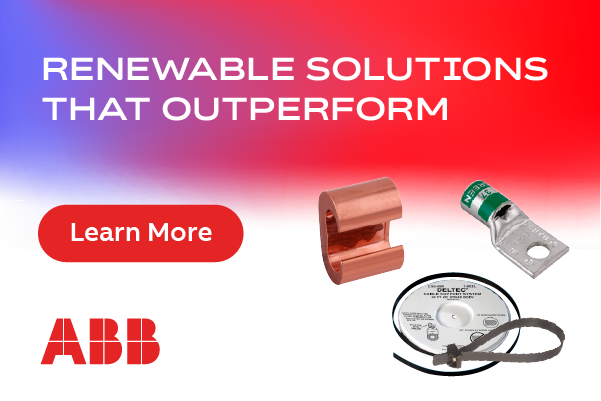Tools for Maximizing Wind Turbine ROI
Maximizing the efficiency of wind turbines is a vital consideration for operators, and managing erosion is a vital method to achieve this. Studies from various sources have consistently shown that erosion can lead to a loss in annual energy production (AEP) of up to 20% in severe cases. This figure is hard to ignore, and highlights the ROI benefits that can be achieved from paying close attention to erosion. In addition to minimizing erosion, owners must also look for additional ways to maximize the aerodynamic efficiency of blades. Doing so can result in AEP boosts that are well worth the effort.
Efforts must be made in both managing erosion and in maximizing aerodynamic efficiency. It is necessary to understand the causes and effects of leading edge erosion, and to bring education to the industry on this problem. The heart of the issue is the fact that wind blades come into contact with rain, hail, salt spray, and other debris in the air at rotation speeds up to 250 mph, leading to erosion in the form of pitting, gouging, and delamination of the edge of the blade. This erosion not only compromises the integrity of the blade, but also impacts its aerodynamic efficiency, causing a significant loss in AEP. This loss can be compounded by the downtime that is necessary to make repairs to turbines, so owners have important motivations for protecting blades against erosion and making repairs quickly. Sometimes, in severe cases of erosion, blade replacement may be necessary.
Fortunately, a variety of effective solutions are available for this task, including:
Wind Protection Tapes
As previously stated, downtime for turbine repairs is costly, so the best defense for turbine operators is to ensure that blades are as protected as possible against erosion, and that when repairs do occur, they are performed with maximum efficiency. Wind protection tape is the product with the longest track record in the industry. This technology is based on the same type of tapes that have been used for decades to protect helicopter blades and aircraft radomes.
Wind protection tape is an effective and proven solution that uses tough, abrasion-resistant polyurethane elastomers applied to the blade to help protect against pitting, wear and water ingression. Wind protection tape can be applied either in the factory or in the field via rope or platform access.
Wind Blade Protection Coating
One good option for protecting blades is a polyurethane coating that is applied by the OEM via brush or casting. A coating designed to be tough like this gives the blade the layer of defense needed against damage caused by sand and rain erosion, as well as minor impacts. Both the tape and coating can help maintain turbine efficiency and reduce downtime, and ultimately extend the useful life of blades.
Epoxy & Polyurethane Fillers
When a blade is past the point of protection and needs actual repair, minor damage can be treated with a filler made out of epoxy or polyurethane. In addition to being used to repair minor damage on wind blade surfaces during maintenance procedures, these fillers can also be used to finish and smooth the wind blade surfaces during manufacturing. When selecting a filler, users should consider their needs for performance time and application methods; varieties are available to suit a range of purposes. Having the right filler can also contribute to prevent leading edge erosion.
Of course, preventing erosion is not the only tool that turbine owners have to maximize their ROI. Turbine performance can also be improved with tools designed for improving aerodynamic efficiency. These include:
Acrylic Foam Tapes
When it is necessary to attach items to a wind turbine, an acrylic foam tape is often an excellent alternative to liquid adhesives and mechanical fasteners. These tapes can be used for applications where reliable bonding or sealing is needed. An acrylic foam tape has the advantage of being highly conformable and flexible, which accommodates the flexing and fatigue forces that are encountered by the turbine blade. It can also stand up to various temperatures and weather conditions the blade may be subjected to.
Vortex Generators
While vortex generators (VGs) have been around for a long time, recent innovations have helped these devices live up to their true potential. VGs are usually made from metal or plastic, and are affixed to wind turbines to help airflow stay attached to the blade for a longer duration, helping to increase the turbine’s efficiency. In the past, VGs have not been properly customized for each installation, and the liquid adhesives that have been used to install them often did not stand up to the constantly varied forces and harsh weathering. However, the combination of proper design and installation for VGs can result in significant improvement. With a VG that is custom fit for a blade design based on aerodynamic studies, turbines can deliver AEP increases of up to 5%. And when attached with durable acrylic foam tape, the VGs continue to provide the AEP increase throughout the life of the turbine.
Conclusion
As technologies continue to improve, wind turbine owners have more useful tools than ever to ensure that wind turbines can stand up to harsh conditions with maximum efficiency and minimal downtime. The tools described here are an excellent starting point designed to extract every ounce of energy, making the turbine more efficient and thus helping to improve its ROI.
Santhosh Chandrabalan is 3M’s technical business development leader.
3M | www.3m.com
Volume: July/August 2015








